You are here: Foswiki>SubExp_Chalmers Web>SiArrayMultiturn (30 Oct 2023, BjörnJohansson)Edit Attach
Multi-Turn Events on a HELIOS-like Array
If protons scatter from the target within a certain angle range (in the lab frame) those protons will makemultiple turns before hitting the detector array. For a proton that makes N turns before the array it will
take N times longer before the proton hits the array. This can make it harder to know if a fission event
has occurred because of the delay before the proton is detected. Thus we want to know when and
how often these multi-turn events occur and what characteristics they have except the longer time of flight. First, let's look at hits on the Si-array with time vs z-position. We can clearly see that the protons take
discrete time steps before they hit which corresponds to the amount of turns they take before hitting
the array. Multi-turn protons only reach a few cm in to the detector since they need to make a complete
turn before the array. Some protons, especially for higher excitation energies, does not make a full
turn before hitting the array and thus takes less time to hit the detector.
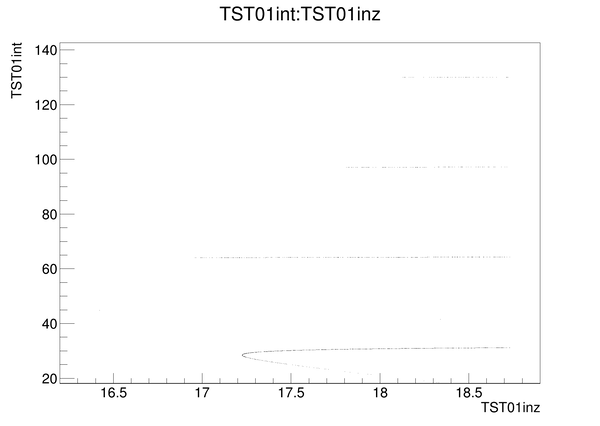
Time vs hit on the detector. The first line corresponds to protons that make one turn before hitting the array. The second line corresponds to protons that make two turns and so on.
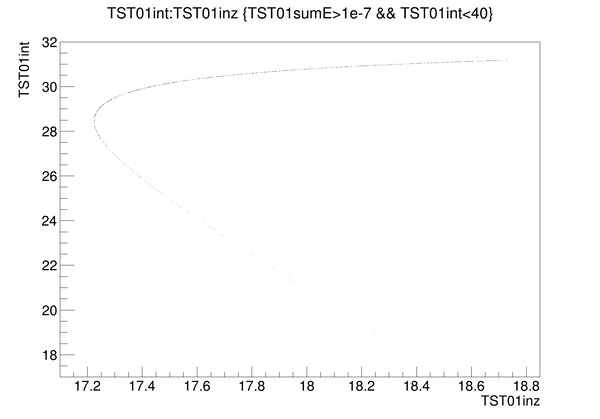
A close up on events that make a single turn before hitting the array. The tail corresponds to protons that hit the detector before making a complete helix.
Events form Excitation Energy of 6 MeV
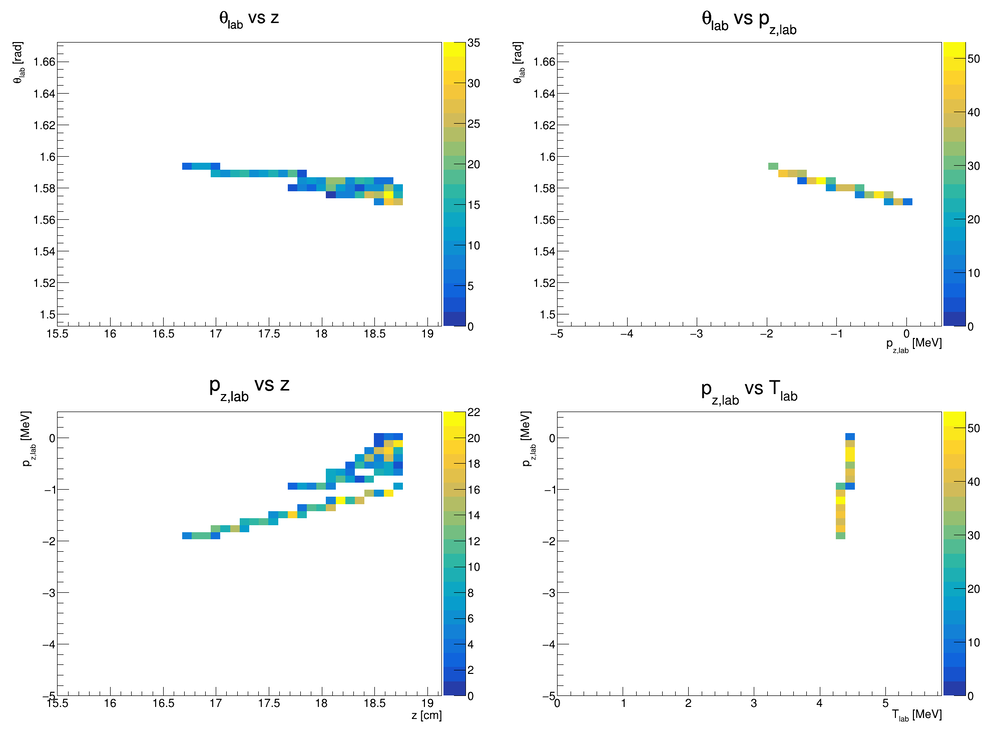
Multi-turn events. Angles, momentum and energy are the initial values from the target
Number of events on the Si_array: 9788 Number of multi-turn events: 588 ratio: 0.060074
Number of double turn events: 298, ratio of all events: 0.030445, ratio of multi-turn events: 0.506803
Number of triple turn events: 92, ratio of all events: 0.009399, ratio of multi-turn events: 0.156463
Events form Excitation Energy of 7 MeV
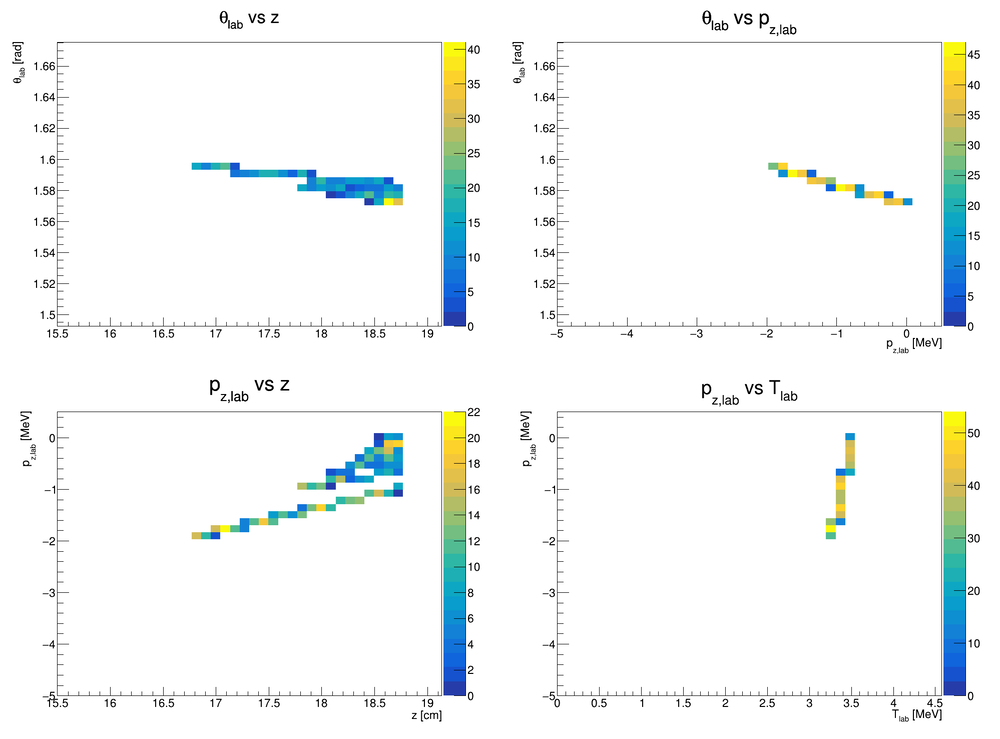
Multi-turn events. Angles, momentum and energy are the initial values from the target
Number of events on the Si_array: 7982 Number of multi-turn events: 578 ratio: 0.072413
Number of double turn events: 294, ratio of all events: 0.036833, ratio of multi-turn events: 0.508651
Number of triple turn events: 101, ratio of all events: 0.012653, ratio of multi-turn events: 0.174740
Events form Excitation Energy of 8 MeV
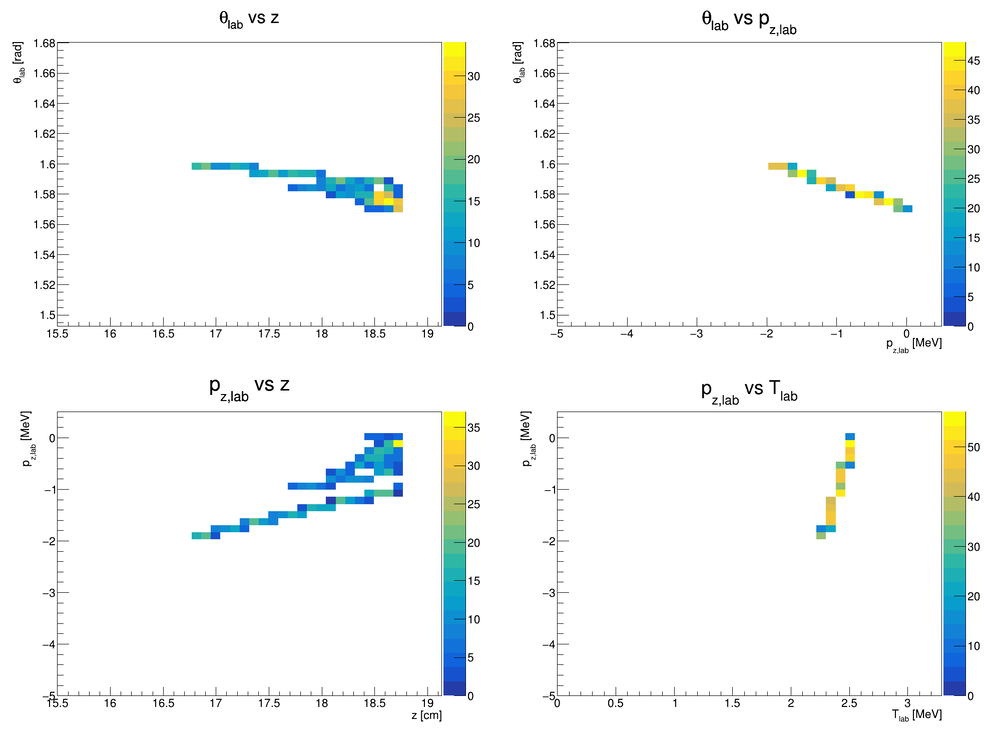
Multi-turn events. Angles, momentum and energy are the initial values from the target
Number of events on the Si_array: 6307 Number of multi-turn events: 651 ratio: 0.103219
Number of double turn events: 311, ratio of all events: 0.049310, ratio of multi-turn events: 0.477727
Number of triple turn events: 109, ratio of all events: 0.017282, ratio of multi-turn events: 0.167435
Events form Excitation Energy of 9 MeV
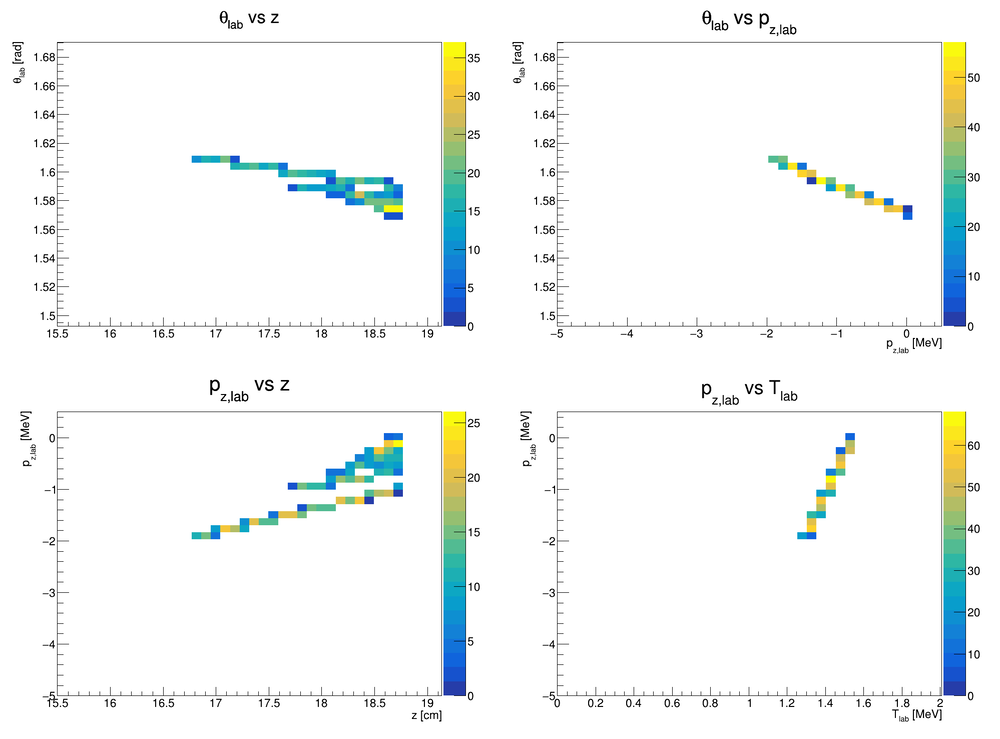
Multi-turn events. Angles, momentum and energy are the initial values from the target
Number of events on the Si_array: 4087 Number of multi-turn events: 740 ratio: 0.181062
Number of double turn events: 363, ratio of all events: 0.088818, ratio of multi-turn events: 0.490541
Number of triple turn events: 142, ratio of all events: 0.034744, ratio of multi-turn events: 0.191892
Events form Excitation Energy of 10 MeV
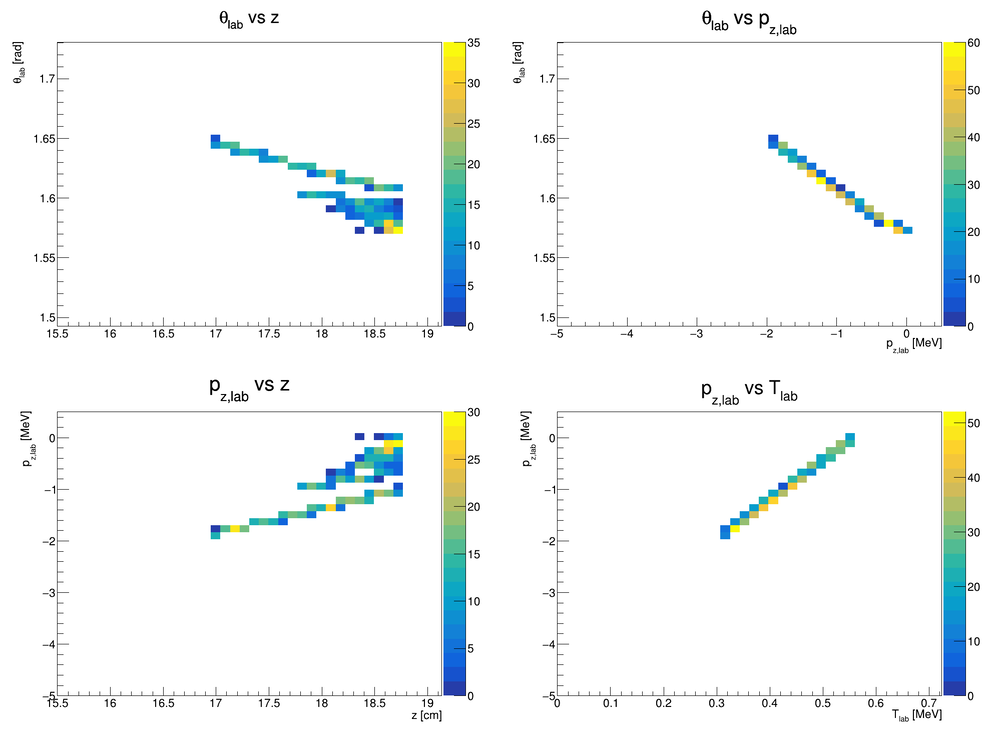
Multi-turn events. Angles, momentum and energy are the initial values from the target
Number of events on the Si_array: 1565 Number of multi-turn events: 720 ratio: 0.460064
Number of double turn events: 352, ratio of all events: 0.224920, ratio of multi-turn events: 0.488889
Number of triple turn events: 125, ratio of all events: 0.079872, ratio of multi-turn events: 0.173611 Total number of events where protons hit before 40 ns (single-turn): 845
Number of events where protons hit the array faster than 30 ns: 284, ratio of single-turn events: 0.336095
Edit | Attach | Print version | History: r2 < r1 | Backlinks | View wiki text | Edit wiki text | More topic actions
Topic revision: r2 - 30 Oct 2023, BjörnJohansson
- This page was cached on 08 Aug 2025 - 18:02.
 Copyright © by the contributing authors. All material on this collaboration platform is the property of the contributing authors.
Copyright © by the contributing authors. All material on this collaboration platform is the property of the contributing authors. Ideas, requests, problems regarding Foswiki? Send feedback
